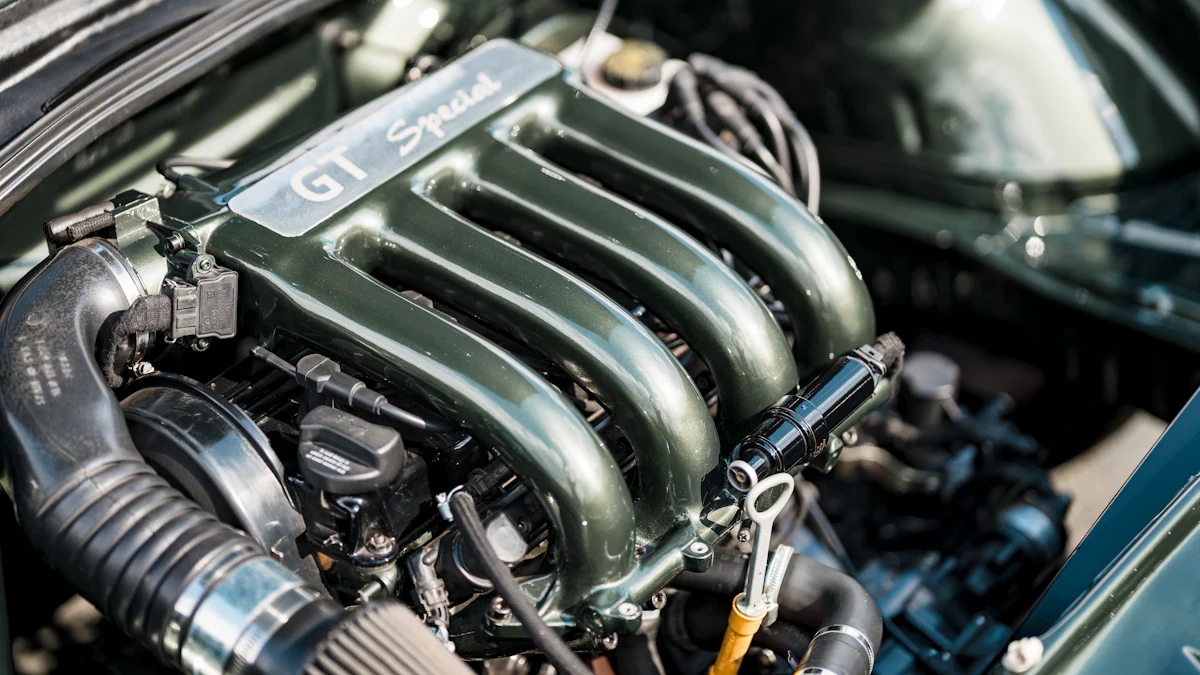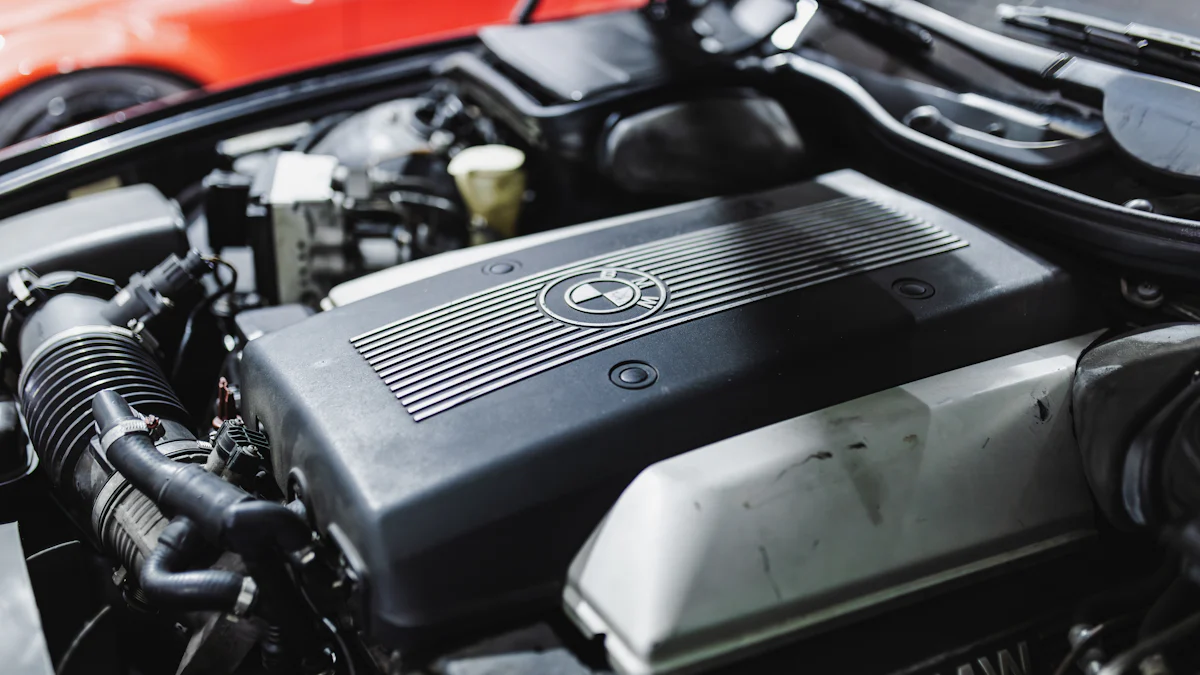
The 5.3 Vortec engine stands as a pinnacle of reliability and performance, boasting a displacement of 5,327 cc and a bore and stroke measuring 96 mm × 92 mm. This powerhouse, found in various GM full-size vehicles from 1999 to 2002, has garnered acclaim for its robustness. Central to its prowess is the engine intake manifold, a critical component that significantly influences performance. In this blog post, delve into the intricate details of the 5.3 vortec intake manifold diagram, unraveling its complexities for a comprehensive understanding.
Understanding the 5.3 Vortec Engine
Engine Specifications
Technical Details
- The Vortec 5300, known as LM7/L59/LM4, represents a robust V8 truck engine with a displacement of 5,327 cc (5.3 L). It features a bore and stroke measuring 96 mm × 92 mm, distinguishing it from its predecessors like the Vortec 4800. The engine variants were manufactured in St. Catharines, Ontario, and Romulus, Michigan.
Compatibility with Other Components
- The Vortec 5300 engine boasts an assembly site at St. Catharines, Ontario, utilizing globally sourced parts for its construction. With a valve configuration of overhead valves and two valves per cylinder, this powerhouse operates efficiently within various vehicles. Its composite intake manifold and cast nodular iron exhaust manifold contribute to its exceptional performance.
Common Applications
Vehicles Using the 5.3 Vortec
- The 5.3L Gen V V-8 engine finds its place in numerous GM full-size vehicles due to its reliability and power output. From trucks to SUVs, this engine variant has been a popular choice among automotive enthusiasts seeking both performance and durability.
Performance Upgrades
- Enthusiasts looking to enhance their vehicle’s capabilities often turn to the 5.3 Vortec engine for upgrades. With a maximum horsepower of 355 hp (265 kW) at 5600 rpm and torque reaching 383 lb-ft (519 Nm) at 4100 rpm, this engine provides ample room for modifications to elevate both power and efficiency levels.
The Role of the Intake Manifold

Function in the Engine
- Air Distribution: The intake manifold plays a crucial role in ensuring optimal air distribution to the engine cylinders, facilitating efficient combustion.
- Impact on Performance: The manifold’s design directly impacts the engine’s performance, affecting power output and overall efficiency.
Types of Intake Manifolds
- Single Plane vs. Dual Plane: Understanding the difference between single-plane and dual-plane intake manifolds is essential for selecting the right one based on torque and horsepower requirements.
- Material Considerations: The choice of materials for the intake manifold significantly influences its durability, heat dissipation capabilities, and overall performance.
Detailed Diagram of the 5.3 Vortec Intake Manifold

Key Components
Throttle Body
When examining the Throttle Body of the 5.3 Vortec intake manifold, one can observe its critical role in regulating the airflow into the engine. This component serves as a gateway for air intake, controlling the amount entering the combustion chamber with precision.
Plenum
The Plenum is a vital part of the intake manifold system, responsible for distributing the air evenly to all cylinders. By ensuring a balanced flow of air, it optimizes the engine’s performance and efficiency, contributing to smoother operation.
Runners
Delving into the Runners of the intake manifold reveals their function in delivering air from the plenum to individual cylinders. These pathways play a crucial role in maintaining consistent airflow and fuel distribution, essential for proper combustion within the engine.
How to Read the Diagram
Identifying Parts
When deciphering the intricate 5.3 Vortec intake manifold diagram, focus on identifying each component accurately. Start by locating and understanding the Throttle Body, Plenum, and Runners to grasp their individual functions within the system.
Understanding Connections
To comprehend how these components work harmoniously, it is essential to understand their connections within the diagram. Pay close attention to how air flows from the Throttle Body through the Plenum and into each Runner, visualizing how these elements collaborate to optimize engine performance.
Installation and Maintenance Tips
Installation Steps
- Prepare the necessary tools for a successful installation of the 5.3 Vortec Intake Manifold:
- Socket wrench set
- Torque wrench
- Gasket scraper
- New intake manifold gaskets
- Threadlocker compound
- Begin the installation process by disconnecting the negative battery cable to ensure safety during the procedure.
- Remove any components obstructing access to the current intake manifold, such as air ducts or sensors.
- Carefully detach the fuel lines and wiring harness connected to the existing manifold, ensuring no damage occurs during disconnection.
- Loosen and remove the bolts securing the old intake manifold in place, taking care not to misplace them as they will be needed for reassembly.
- Thoroughly clean the mounting surface on the engine block to remove any debris or remnants from the previous gaskets.
- Install new intake manifold gaskets onto the engine block, ensuring proper alignment for a secure fit and optimal performance.
- Position the new 5.3 Vortec Intake Manifold carefully onto the engine block, aligning it with the mounting holes before securing it in place with bolts.
- Tighten all bolts gradually and uniformly using a torque wrench to prevent uneven pressure distribution that could lead to leaks or damage.
Maintenance Best Practices
Regular Inspections
- Schedule periodic inspections of your 5.3 Vortec Intake Manifold to detect any signs of wear, corrosion, or leaks that may compromise its performance.
- Check for loose connections or damaged components regularly to prevent potential issues from escalating into costly repairs down the line.
- Conduct visual inspections of the throttle body, plenum, and intake runners for any buildup of dirt or debris that could impede airflow and reduce efficiency.
Common Issues and Solutions
- Address any vacuum leaks promptly by inspecting hoses and connections for cracks or loose fittings that may disrupt air/fuel mixture ratios in your engine.
- Monitor throttle body functionality regularly to ensure smooth operation and responsiveness, addressing any sticking or sluggish behavior immediately.
- Keep an eye out for coolant leaks around the intake manifold area, as these can indicate failing gaskets or seals that require replacement to prevent overheating issues.
Emphasize the critical role of the intake manifold in optimizing engine performance. Reflect on the detailed exploration of the 5.3 Vortec intake manifold diagram, highlighting its intricate components and functions. Encourage readers to leverage the diagram for enhanced comprehension and effective maintenance practices. Invite feedback, questions, and insights from automotive enthusiasts to foster a collaborative learning environment.
Post time: Jul-02-2024



